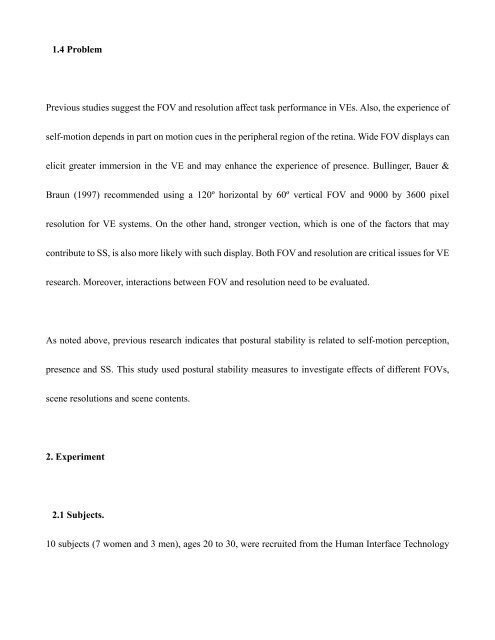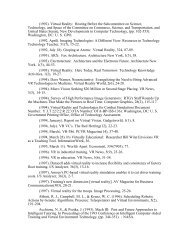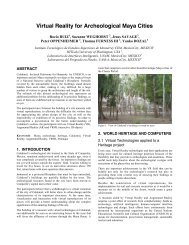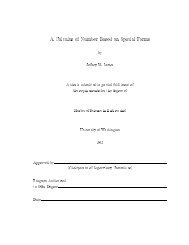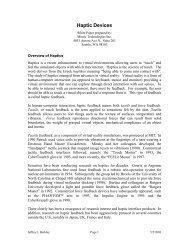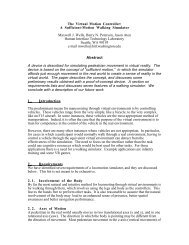Henry B - Human Interface Technology Laboratory - University of ...
Henry B - Human Interface Technology Laboratory - University of ...
Henry B - Human Interface Technology Laboratory - University of ...
Create successful ePaper yourself
Turn your PDF publications into a flip-book with our unique Google optimized e-Paper software.
1.4 Problem<br />
Previous studies suggest the FOV and resolution affect task performance in VEs. Also, the experience <strong>of</strong><br />
self-motion depends in part on motion cues in the peripheral region <strong>of</strong> the retina. Wide FOV displays can<br />
elicit greater immersion in the VE and may enhance the experience <strong>of</strong> presence. Bullinger, Bauer &<br />
Braun (1997) recommended using a 120º horizontal by 60º vertical FOV and 9000 by 3600 pixel<br />
resolution for VE systems. On the other hand, stronger vection, which is one <strong>of</strong> the factors that may<br />
contribute to SS, is also more likely with such display. Both FOV and resolution are critical issues for VE<br />
research. Moreover, interactions between FOV and resolution need to be evaluated.<br />
As noted above, previous research indicates that postural stability is related to self-motion perception,<br />
presence and SS. This study used postural stability measures to investigate effects <strong>of</strong> different FOVs,<br />
scene resolutions and scene contents.<br />
2. Experiment<br />
2.1 Subjects.<br />
10 subjects (7 women and 3 men), ages 20 to 30, were recruited from the <strong>Human</strong> <strong>Interface</strong> <strong>Technology</strong>


